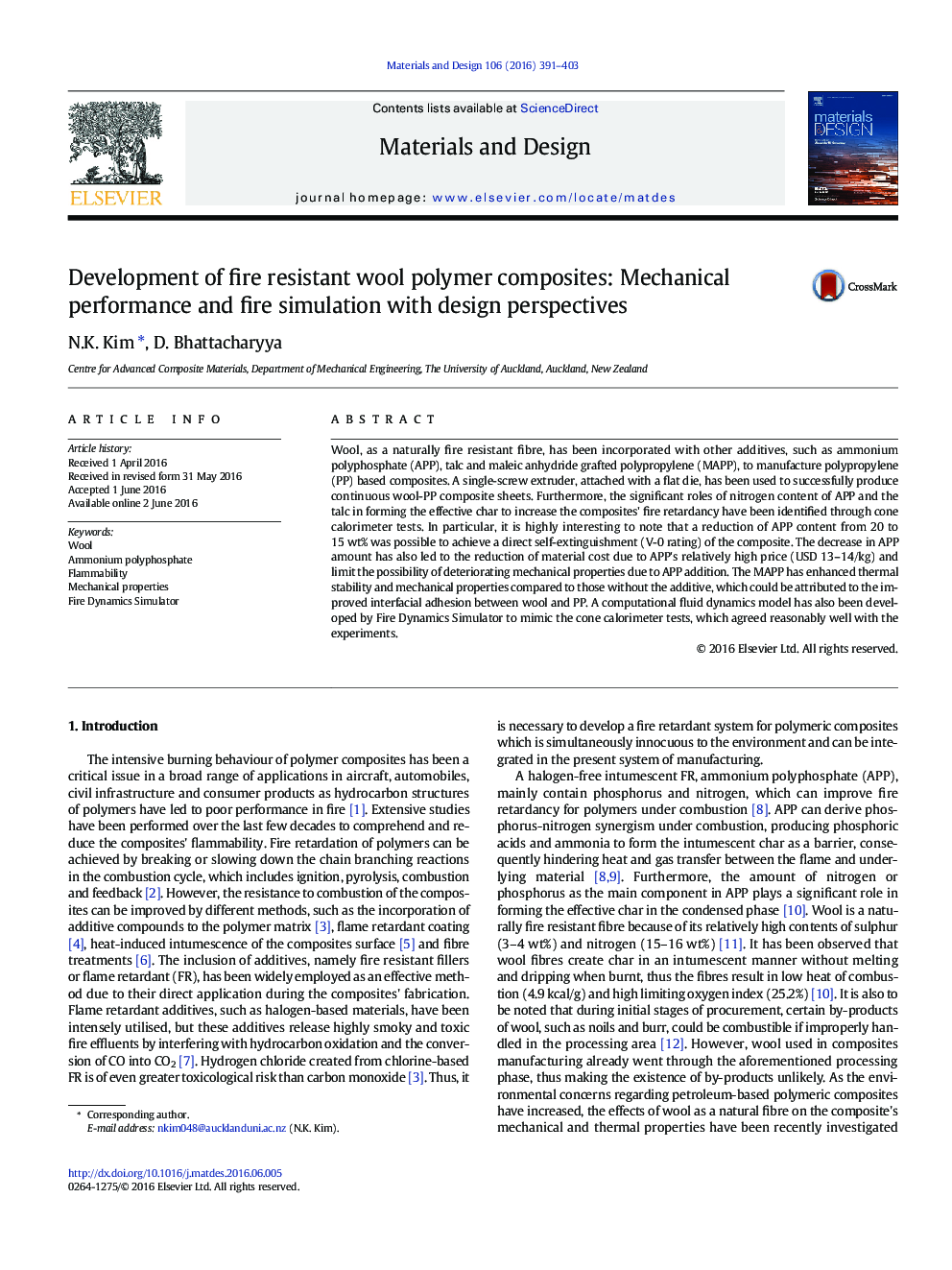| Article ID | Journal | Published Year | Pages | File Type |
|---|---|---|---|---|
| 827900 | Materials & Design | 2016 | 13 Pages |
•Short wool fibre filled polypropylene composite sheets of good quality were produced by a continuous extrusion process.•Compact char formed by ammonium polyphosphate with high nitrogen content and talc effectively reduced flame propagation.•Adding wool achieved a V-0 rating in vertical burn test with as little as 15 wt% of ammonium polyphosphate.•Heat release rates from fire dynamics simulator and experimental results of cone calorimeter were reasonably close.
Wool, as a naturally fire resistant fibre, has been incorporated with other additives, such as ammonium polyphosphate (APP), talc and maleic anhydride grafted polypropylene (MAPP), to manufacture polypropylene (PP) based composites. A single-screw extruder, attached with a flat die, has been used to successfully produce continuous wool-PP composite sheets. Furthermore, the significant roles of nitrogen content of APP and the talc in forming the effective char to increase the composites' fire retardancy have been identified through cone calorimeter tests. In particular, it is highly interesting to note that a reduction of APP content from 20 to 15 wt% was possible to achieve a direct self-extinguishment (V-0 rating) of the composite. The decrease in APP amount has also led to the reduction of material cost due to APP's relatively high price (USD 13–14/kg) and limit the possibility of deteriorating mechanical properties due to APP addition. The MAPP has enhanced thermal stability and mechanical properties compared to those without the additive, which could be attributed to the improved interfacial adhesion between wool and PP. A computational fluid dynamics model has also been developed by Fire Dynamics Simulator to mimic the cone calorimeter tests, which agreed reasonably well with the experiments.
Graphical abstractFigure optionsDownload full-size imageDownload as PowerPoint slide
